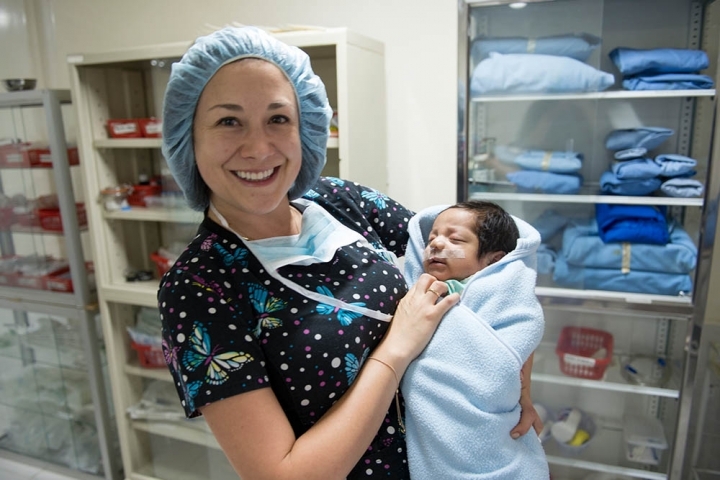Cleft Lip and/or Palate Surgery
Reconstructive surgery for cleft lip and/or palate has evolved over more than half a century and today's techniques and procedures have come a long way.

Reconstructive surgery for cleft lip and/or palate has evolved over more than half a century and today's techniques and procedures have come a long way. Most experts agree that cleft lips should be treated within the first three to six months after birth. Cleft palates typically can be operated on between eight and twelve months. Most children with clefts undergo a series of surgeries as they grow and develop. Depending on the severity of their clefts and other factors, a child could undergo multiple surgeries during his/her first 20 years.
Essential Information About Cleft Surgery
Smile Train has created a video that explains essential information about safety and quality measures before, during, and immediately after surgery. View now in English, and contact Smile Train for availability in other languages.
Surgery Steps
Before
Before surgery, it is important for caregivers to carefully listen to any instructions given by their medical team. This may include instructions about when a child is permitted to eat or drink prior to surgery, important information about what to expect, and other information that will help ensure your child has the best outcome.
During
During surgery, the child will be given a general anaesthetic so that they will be asleep and will not feel any pain. The length of the surgery will depend on the type of surgery, the child, and the treatment team. When the surgery is completed, they will be monitored in the Post-anaesthetic Care Unit (PACU) before being transferred to the recovery ward.
After
After surgery, the doctors and nurses may provide you with special information about caring for the surgical area. The surgical team may ask caregivers to gently clean around the stitches with a soft cotton swab and water twice a day to keep the wound clean and remove any clots or crusts. Caregivers may also be instructed to apply ointment to the lip twice a day after cleanings. However, in some cases, no cleaning or wound care is required at all. Most surgeries will heal normally, but if your child seems to have any discomfort or complications following the surgery you should consult your cleft care team.
Resources
The following are additional resources available to help caregivers and their children prepare physically, emotionally, and mentally for what will happen before, during, and after cleft lip and/or palate surgery.
Leaving Surgery and Home Care
- SSM Health Cardinal Glennon Children's Hospital: Cleft Palate Repair Discharge Instructions
- International Craniofacial Institute: Suture Care For Repaired Lip
- American Cleft Palate-Craniofacial Association: Common Questions About Scars
- Children's Craniofacial Association: Going Back To School After Surgery
